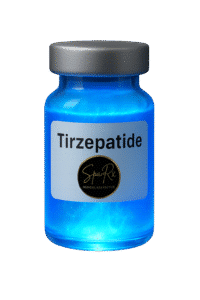Tirzepatide – Uses, Benefits, Side Effects, and More

Tirzepatide is a first-in-class dual glucose-dependent insulinotropic polypeptide (GIP) and glucagon-like peptide-1 (GLP-1) receptor agonist, representing a major advancement in the treatment of metabolic disorders. By simultaneously targeting these two key incretin hormones, tirzepatide enhances insulin secretion, suppresses glucagon release, and regulates appetite, providing significant improvements in both glycemic control and weight management.
Initially developed for adults with type 2 diabetes mellitus (T2DM), clinical evidence has demonstrated that tirzepatide not only lowers hemoglobin A1c (HbA1c) effectively but also promotes substantial weight loss, making it a dual-purpose therapeutic option for patients with diabetes who also struggle with obesity or overweight-related comorbidities.
Beyond diabetes and obesity, emerging research suggests that tirzepatide may provide adjunctive benefits in patients with moderate to severe obstructive sleep apnea (OSA), cardiovascular risk reduction, and metabolic syndrome, highlighting its potential role in comprehensive metabolic disease management.
This guide provides an in-depth overview of tirzepatide, covering its mechanism of action, clinical trial outcomes, FDA-approved indications, dosage recommendations, administration techniques, side effect profile, and special considerations for patients, including lifestyle and dietary modifications. It is designed to support healthcare providers in evidence-based decision-making and to inform patients seeking a deeper understanding of how this novel therapy can improve metabolic health outcomes.
What is Tirzepatide?
Dual GIP/GLP-1 receptor agonist used to improve blood sugar, aid weight loss, and treat obesity-related conditions.
Why It’s Important
Clinically significant for weight loss, glycemic control, and improving outcomes in patients with obesity and type 2 diabetes.
Mechanism of Action
GIP & GLP-1 Hormones
Stimulate insulin secretion, improve glucose control, and slow gastric emptying.
Appetite & Satiety
Reduces appetite, increases fullness, and promotes weight loss over time.
Blood Sugar Effects
Improves HbA1c, fasting glucose, and overall glycemic control.
Clinical Benefits & Trial Results
Weight Loss
SURMOUNT trials show patients achieving 15-20% body weight reduction over 72 weeks.
Blood Sugar Improvement
Reduces HbA1c by up to 2% in type 2 diabetes patients.
Appetite Control
Significant reductions in caloric intake and improved satiety.
Dosage & Administration
Form & Strength
Tirzepatide is available as subcutaneous injections in multiple strengths (2.5mg, 5mg, 7.5mg, 10mg, 12.5mg, 15mg).
Administration
- Subcutaneous injection once weekly
- Rotate injection sites (abdomen, thigh, upper arm)
- Use a new needle for each injection
Missed Dose
If a dose is missed, take it as soon as possible within 5 days; otherwise, skip and resume normal schedule. Do not double up.
| Strength | Starting Dose | Titration |
|---|---|---|
| 2.5 mg | 2.5 mg once weekly | Increase by 2.5 mg every 4 weeks as tolerated |
| 5–15 mg | Depends on titration schedule | Maximum recommended dose: 15 mg once weekly |
Side Effects & Safety
Common
- Nausea
- Diarrhea
- Vomiting
- Constipation
Serious
- Pancreatitis
- Thyroid tumors (rare)
- Hypoglycemia
- Allergic reactions
Contraindications
- Personal or family history of medullary thyroid carcinoma
- Multiple endocrine neoplasia type 2
- Pregnancy or breastfeeding (not recommended)
Drug Interactions & Precautions
Interacting Medications
- Insulin or other antidiabetic agents
- Oral medications that affect gastric emptying
- Other GLP-1 receptor agonists
Special Populations
- Pregnancy: not recommended
- Breastfeeding: unknown safety
- Elderly: monitor renal and hepatic function
Lifestyle Considerations
- Follow a balanced diet
- Monitor exercise intensity
- Track weight and blood glucose regularly
Frequently Asked Questions
Mounjaro vs Zepbound
Both contain tirzepatide; brand difference is indication and FDA labeling.
Missed Dose
If missed, inject as soon as possible within 5 days; otherwise, skip and resume normal schedule.
Time to Results
Blood sugar improvements can be seen within weeks; weight loss typically 8–12 weeks.
Conclusion
Tirzepatide is a clinically proven medication for type 2 diabetes, obesity, and related conditions. With proper monitoring, diet, and lifestyle, it offers meaningful improvements in blood sugar control and weight management. Always consult a healthcare provider to determine suitability and dosing.


